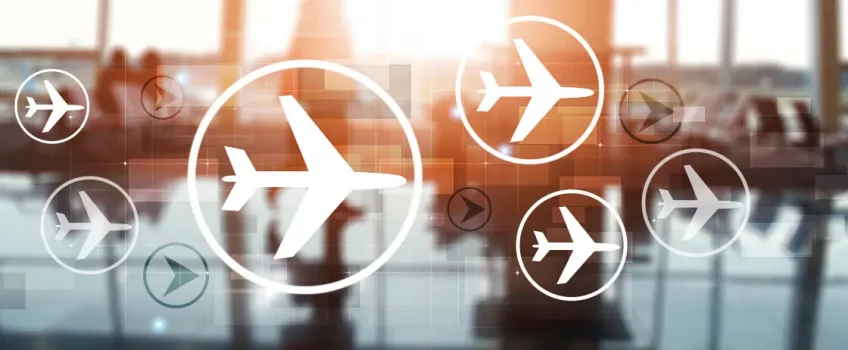
With a continued focus on decarbonising the aviation sector using sustainable aviation fuels and battery tech, how close are we to hybrid-electric flight?
Since air traffic is set to increase 5% every year until 2030, it’s not surprising that more companies are looking for ways to make aircraft more sustainable. Rolls-Royce, the world’s second-largest aircraft engine manufacturer, has joined the fray by revealing its new turbogenerator.
The new ‘turbogenerator’ from Rolls-Royce includes a new small engine specifically designed for hybrid-electric aircraft. This system will act as an onboard, scalable power source which could result in extended range using sustainable aviation fuels and hydrogen combustion once it becomes available.
The State Of Electrifying Aviation
The major challenge with current battery technology is that it can only really support short-haul flights with a few passengers on board. While it’s a great solution for urban eVTOL aircraft, long-haul flights with hundreds of passengers covering vast distances across oceans will continue to use fossil fuels, at least for now.
Research and development into developing sustainable aviation fuels (SAFs) for long-distance flights are ongoing, already showing impressive results. The new ‘turbogenerator’ from Rolls-Royce is another potential solution to help advance propulsion methods for hybrid-electric aircraft.
Similar to hybrid vehicles, hybrid-electric aircraft essentially combine two sources of power. This is most often a type of fuel and an electric battery or a hydrogen fuel cell. Let’s take a close look at the turbogenerator from Rolls-Royce.
How Does The Turbogenerator For Hybrid-Electric Aircraft Work?
Rolls-Royce engineers have found a way to combine electrical power and propulsion into one engine. The turbo generator is a fully integrated concept, meaning that the gas turbine, generator, and power electronics all work together to generate a small and lightweight engine.
When fitted to an electric aircraft, the turbogenerator can directly power the propellors or generate power to charge the onboard batteries. Whichever way you look at it, the turbogenerator can be used to increase the range of the hybrid-electric aircraft or help increase the maximum take-off weight. Both applications will further the advancement of electric air mobility.
With Rolls-Royce developing scalable turbogenerator technology serving a power range between 500 kW and 1200 kW, new longer routes could become possible for electric battery-powered. The aviation giant will now perform further tests with its partners to demonstrate its capabilities on its products.
The Path To Decarbonising Aviation
The new engine for future hybrid-electric aircraft can run on sustainable aviation fuel and hydrogen when it becomes available in the future. While hydrogen may not be there yet, it could be a long-term solution to decarbonising the aviation sector.
Rolls-Royce is further bolstering the decarbonisation efforts with its microgrid solutions for rapid charging of electric aircraft as part of its electrical systems services. These grids can be powered by renewable energy sources such as wind and solar. It will ensure that all future vertiports have access to climate-friendly, sustainable power for electric aircraft.
Rob Watson, President of Rolls-Royce Electrical said: “Rolls-Royce will scale this technology over time to larger platforms. As part of our strategy, we are looking at offering a complete sustainable solution for our customers. This means extending routes that electric flight can support through our turbogenerator technology.”
The Development Of Hybrid-Electric Aircraft
While there are still several challenges to overcome, companies like Rolls-Royce and Airbus are working tirelessly to find solutions. Hybrid-electric aircraft are currently among the most promising as using less fuel reduces the weight which could increase the overall range.
Rolls-Royce has pledged to achieve net-zero carbon emissions and will strive to ensure that all of its new products have carbon-neutral operations by 2030. Here are a few alternative-propulsion aircraft developed over the last few years:
- 4-seater electric CityAirbus
- E-Fan X (a complex hybrid-electric aircraft demonstrator)
- E-Fan 1.1 which crossed the English Channel
- Pipistrel’s Alpha Electro (electric light sport aircraft) which took off in Australia
- The UK’s very own Bio-Electric Hybrid Aircraft, the BEHA_M1H
- Zunum Aero Hybrid-electric aircraft internally referred to as ZA10
Final Thoughts
Considering that the global aviation industry accounts for 2.4% of the total carbon-dioxide emissions and about 12% of the greenhouse gases, finding a solution is vital. Furthermore, the International Civil Aviation Organization (ICAO) predicts that by 2050, emissions from aviation could increase by 300%.
It’s imperative that the aviation sector work together and get the technology just right. Once successful, more passengers will be able to travel further on low to net zero emissions hybrid-electric aircraft. If you liked reading this article, please follow our blog for the latest updates in manufacturing, engineering and technology.


 Mail:
Mail: 



